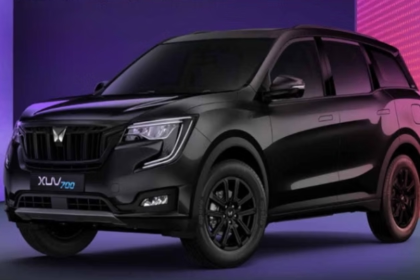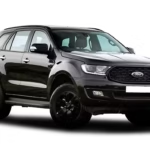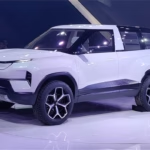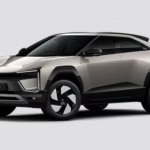Introduction
India’s electric vehicle segment is changing at a faster rate than ever before, with budget city EVs hogging the limelight. In recent years, players like Tata Motors, MG Motor, and Citroën have been driving the affordable EV segment—providing offerings like the Tata Tiago EV, MG Comet EV, and Citroën eC3, all competing for the increasing urban demand for small, efficient, and low-maintenance electric hatchbacks.
These vehicles have paved the way for a future of electrification, when buying an EV is no longer a luxury but a viable option for the middle-class Indian consumer. In the midst of this revolution, Renault, the mass-market disruptor with the Renault Kwid EV, is poised to make a comeback—this time in the EV space.
Renault’s return with the 2026 Kwid EV:
- The French car maker is poised to make a comeback in India’s EV competition with the 2026 Renault Kwid EV, an urban India-specific small and affordable hatchback.
- The vehicle promises to marry affordability with performance, appealing to first-time EV purchasers looking for something more sensible than a two-wheeler and more economical than a petrol vehicle.
More power, quicker charging, new design:
- The new Kwid EV will be equipped with a more powerful electric motor, allowing for improved performance for city drives and highway sprints.
- It also brings much quicker charging technology, cutting down on waiting time and making EV usage more convenient for Indian customers.
- Renault has bestowed the vehicle with a contemporary, EV-dedicated makeover—complete with aggressive-looking DRLs, aerodynamic wheels, and sci-fi-inspired interior details to fit in with the prevailing market tide.
Quick overview of what’s new:
- The 2026 Kwid EV represents a significant overhaul from the international City K-ZE model. Look for a 26.8 kWh battery pack, a range of approximately 220–225 km, and DC fast-charging capability of up to 30 kW.
- Paired with two powertrains (44 bhp and 64 bhp), the new Kwid EV is designed to mesh everyday practicality with performance—yet maintain the price between Rs 7–9 lakh, earning it one of the most promising budget EVs for 2026.
Key Specifications & Powertrain Updates
The 2026 Renault Kwid EV is designed to close the gap between cost-effectiveness and usability—two factors essential for India’s mass-market EV transition. Renault has painstakingly re-engineered the Kwid platform, which was initially famous for its lightness and efficiency, to accommodate the needs of electric mobility. With an enhanced battery system, two powertrain options, and enhanced energy management, the new Kwid EV is more than a facelift—it’s an entire technological transformation meant for longer range, faster performance, and reliable everyday use.
Battery & Range
New 26.8 kWh lithium-ion battery pack:
- Renault has also equipped the Kwid EV with a lithium-ion battery that has a higher density of 26.8 kWh, providing improved energy retention as well as range consistency under diverse weather conditions.
- It’s an improvement over the older global-spec City K-ZE’s 26 kWh unit to provide improved performance for India’s temperature ranges.
Claimed range: 220–225 km (real-world) / 250 km+ (ARAI):
- On a single charge, the new Kwid EV offers a real-world range of approximately 220–225 km for regular daily commute and weekend driving.
- In ARAI testing, the range could exceed 250 km, making it a class leader over its competitors, such as the MG Comet EV, and almost on par with the Tiago EV’s long-range model.
Enhanced battery management system (BMS) for thermal efficiency
- Renault’s re-tuned BMS delivers best-in-class thermal management, minimizing heat buildup on quick charging and spirited runs.
- In addition to being safer, it also extends battery life, delivering consistent performance even after years of driving.
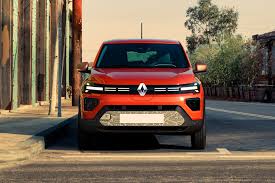
Motor & Performance
- The 2026 Kwid EV will be available in two motor options so that customers can opt for efficiency-centered or performance-driven driving.
- The new-generation permanent magnet synchronous motor (PMSM) with single-speed transmission is common to both options, which provide smooth torque output and immediate throttle response characteristic of new-generation EVs.
Base variant: ~44 bhp, 125 Nm torque
- The entry-level version will focus on urban mobility and economy, offering peppy low-speed acceleration perfect for stop-and-go city traffic.
- Despite being the base trim, it ensures smooth performance for everyday commutes.
Higher variant: ~64 bhp, 160 Nm torque:
- The top-spec version ups the ante with a more powerful motor that delivers brisk mid-range acceleration.
- It has better hill-climb performance, appealing to users who occasionally travel on highways.
Expected 0–100 km/h in ~12 seconds, top speed of ~120 km/h:
- The Kwid EV won’t be efficient alone—it will also be a blast to drive. Since it will deliver instant torque, it’s expected to accelerate to 0–100 km/h in about 12 seconds, while the top speed of about 120 km/h is enough to keep it usable for short intercity jaunts as well.
Charging Performance
Renault has taken extra care with one of the largest concerns of Indian EV customers — charging time and convenience. The 2026 Kwid EV has a far superior charging architecture that offers both AC home charging and DC fast charging, which is appropriate for urban commuters who can use home setup as well as users preferring quick refuelling at public terminals. The enhanced thermal efficiency of the new battery pack, combined with a strong charging management system, provides quicker, safer, and more dependable charging cycles.
AC Home Charging
7 kW onboard AC charger:
The Kwid EV will be powered with a 7 kW onboard AC charger, which can be plugged into an ordinary wall-box installation at home or office.
The installation enables overnight easy charging without the need for expensive DC infrastructure.
20–100% charge in 4–5 hours
- With a 7 kW home charger, the battery will be charged from 20% to 100% in about 4 to 5 hours.
- This is perfect for urban daily users who can charge overnight and begin each morning with a charged battery.
DC Fast Charging
Allows 30 kW DC fast charging:
- Renault has also provided the Kwid EV with 30 kW DC fast-charging capability, a significant upgrade from last-generation small EVs.
- This option will make for rapid pit stops on long road trips or urgent top-ups on the move.
20–80% charge in ~45 minutes, perfect for quick city recharges
- The Kwid EV, equipped with a DC fast charger, charges from 20% to 80% in about 45 minutes, giving enough charge for 150+ km of road time.
- This quick turnaround is ideal for urban electric car users who rely on quick, effective recharging stops in the middle of their daily routines.
Design & Technology Upgrades
The 2026 Renault Kwid EV is more than a performance boost—it also boasts a new, futuristic look that’s all its own in the electric vehicle space. Renault redesigned both the exterior and interior to meet its new EV image while retaining the Kwid’s slim, city-centric dimensions. The styling refinements, along with sophisticated in-cabin tech, are designed to deliver both good looks and practicality for today’s urban motorists.
EV-Specific Styling Cues
- Closed grille, blue trim, Y-shaped DRLs, black cladding, and redesigned bumpers:
- The front fascia has been reworked for aerodynamics and a futuristic appearance.
- Blue trim emphasizes the EV character, and Y-shaped LED daytime running lights (DRLs) and black cladding provide a sportier demeanor for city streets.
New aerodynamic alloy wheels and unique LED tail-lamps:
- The Kwid EV boasts fluid alloy wheels for aerodynamics and efficiency, and LED tail-lamps for improved visibility and enhanced premium character to the small hatchback.
Cabin & Technology Improvements
10-inch infotainment system (Android Auto & Apple CarPlay):
- The touchscreen system enables easy smartphone integration, navigation, and real-time vehicle monitoring.
7-inch digital instrument cluster:
- Delivers crisp, customizable displays for speed, battery level, range, and charging data.
Wireless charging pad, automatic climate control, and connected-car technology:
- Increases convenience and comfort with wireless charging of phones, efficient cabin heating and cooling, and vehicle diagnostics via connected apps.
Safety Features
- The Kwid EV also prioritizes improved safety, one of the primary concerns of first-time and urban EV buyers.
Dual airbags, ABS with EBD, rear parking camera:
- Standard active safety features protect the driver and passengers, with ABS and EBD enhancing braking capability, and a rearview camera making parking in congested city areas easier.
Optional ADAS Lite (lane warning, low-speed collision alert) under development:
- Renault is piloting entry-level driver assist technologies such as lane warnings and low-speed collision warnings in an effort to make the vehicle safer without adding much to the price.
Price, Variants & Market Position
The 2026 Renault Kwid EV is set to attract Indian customers who seek the advantages of electric mobility at an affordable price. Renault will aim to balance cheap pricing, cutting-edge EV technologies, and functional performance, establishing the Kwid EV as a top player in the small electric hatchback market. With several variants, it appeals to both performance-oriented customers as well as those who want a more enhanced driving experience, yet at costs competitive with the competition in the segment.
Expected Price: Rs 7 lakh – Rs 9 lakh (ex-showroom):
- The Kwid EV is likely to be within a cost-effective bracket, thus appealing to entry-level EV buyers and urban commuters.
Positioning:
- Positioned below the Tata Tiago EV in price.
- Competitor to the MG Comet EV and Citroën eC3 for features and range.
Target Buyers:
- First-time EV adopters.
- Urban commuters who daily drive through cities.
- Small families seeking a functional second car.
Competitive Edge Comparison Table
| Feature / Brand | Renault Kwid EV 2026 | Tata Tiago EV (Base) | MG Comet EV | Citroën eC3 |
| Expected Price (Rs lakh) | 7 – 9 | 7.5 – 9 | 8 – 10 | 9 – 11 |
| Motor Power (bhp) | 44 / 64 | 40 / 60 | 50 | 55 |
| Torque (Nm) | 125 / 160 | 110 / 140 | 120 | 135 |
| Battery Capacity (kWh) | 26.8 | 24 | 26 | 27 |
| Range (km, real-world) | 220–225 | 210–220 | 220 | 230 |
| AC Charging | 7 kW | 3.3 / 6.6 kW | 7 kW | 7 kW |
| DC Fast Charging | 30 kW | 15–25 kW | 30 kW | 30 kW |
| Service Network Advantage | Strong (Renault) | Very strong (Tata) | Moderate | Limited |
Launch Timeline & Availability
The 2026 Renault Kwid EV will make a strategic debut in the Indian market, creating hype among urban electric vehicle purchasers. Renault will follow a staggered launch strategy with a global unveiling followed by an India debut. The automaker is also working on the localization of parts, which will lower the cost of production, make the EV competitively priced, and possibly make it eligible for government support through FAME-III, increasing its attractiveness to price-conscious consumers.
Anticipated worldwide launch in mid-2025:
- Renault will probably unveil the final production-spec Kwid EV at global auto exhibitions or via virtual launch events during mid-2025.
Launch in India most probable in early 2026:
- The EV is likely to go on sale in Indian dealerships during early 2026, coinciding with growing EV demand and government incentive schemes.
Localization to minimize costs and maximize subsidy eligibility under FAME-III:
- By using Indian content and locally assembling the car, Renault plans to reduce the ex-showroom price, enhance serviceability, and potentially become FAME-III incentive eligible, cutting down the cost of ownership for Indian customers.
Buyer’s Perspective
The 2026 Renault Kwid EV is set to be an affordable, budget-friendly, and city-focused electric hatchback. For city customers, it provides low operating expenses, convenient maneuverability, and consistent performance for regular city drives. Though it has some strengths, such as instant torque and quick-charging capability, the customer should also consider its cons, such as small boot space and an actual range below 250 km, which might influence long-distance traveling. As a whole, it serves the requirements of first-time EV buyers and small families who desire a good, low-cost, and contemporary electric car.
Practicality for daily use with low operating cost (Rs 1.2–Rs 1.5/km):
- The Kwid EV has much lower running costs than petrol or diesel vehicles, making it suitable for city dwellers and short-distance daily driving.
Ideal for city congestion thanks to instant torque and small size:
- Its light body and small size provide easy passage through traffic, with instant electric torque providing effortless acceleration in stop-start traffic.
Improved fast-charging support means greater long-distance flexibility:
- With 30 kW DC fast-charging capability, motorists can charge up during city or intercity journeys, providing the Kwid EV a real-world advantage over other small EVs with slower charging.
Disadvantages: reduced boot space and real-world range still below 250 km:
- Purchasers should be aware that luggage space is limited, and although range is adequate for short city trips, planned charging stops will be necessary for longer trips, so not as good as an initial main distance car.
Conclusion
The 2026 Renault Kwid EV is poised to revolutionize India’s affordable electric vehicle space through practicality, performance, and contemporary design. With greater powertrain options, much quicker charging, and an updated EV-focused design, Renault is coming back strong in the urban EV competition. If Renault positions the Kwid EV competitively in the Rs 7–9 lakh range, it can be India’s most affordable and sought-after electric hatchback, attracting first-time EV customers, city dweller commuters, and small family buyers seeking a reliable, affordable, and fashionable green mobility solution.
FAQs
Q1. How far can the 2026 Renault Kwid EV travel on a charge?
A1. The 2026 Kwid EV is estimated to have a real-world range of 220–225 km on a single charge, which makes it perfect for daily urban commutes.
Q2. How big is the battery pack in the Renault Kwid EV?
A2. It is fitted with a 26.8 kWh lithium-ion battery pack, which offers a compromise between efficiency and adequate range for city dwellers.
Q3. How quickly can the Renault Kwid EV be charged?
A3. For the battery to take a 0–100% charge, using a 7 kW AC domestic charger takes 4–5 hours. It can be charged to 20–80% using a 30 kW DC charger in about 45 minutes, enabling rapid top-ups on city or short intercity runs.
Q4. What is the Renault Kwid EV’s top speed?
A4. The maximum speed should be around 120 km/h, which will be appropriate for city driving as well as regular use on highways.
Q5. How much will the 2026 Renault Kwid EV cost in India?
A5. The anticipated ex-showroom price will be between Rs 7 lakh and Rs 9 lakh, making it one of India’s cheapest electric hatchbacks.
Q6. When will the Renault Kwid EV go on sale in India?
A6. Its official release is scheduled for early 2026, after a mid-2025 global unveiling.
Q7. Whom do the Kwid EV’s main rivals consist of?
A7. Tata Tiago EV, MG Comet EV, and Citroën eC3 are its direct rivals in the urban compact EV segment.
Q8. Is fast charging available on the Renault Kwid EV?
A8. Yes, it has 30 kW DC fast charging capability, besides normal AC home charging, which makes it more convenient for day-to-day use and short journeys.

